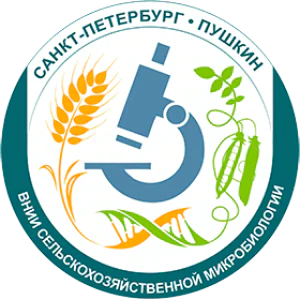Open Access


Composite Cucurbita pepo plants with transgenic roots as a tool to study root development
Elena L Ilina
1, 2
,
Anton A Logachov
3
,
Laurent Laplaze
4
,
Nikolay P Demchenko
3
,
Katharina Pawlowski
5
,
1
Komarov Botanical Inst., Russian Academy of Sciences
|
2
St Petersburg Russia
|
4
Institut de Recherche pour le Développement, UMR DIADE (Agro.M/INRA/IRD/UM2), Equipe Rhizogenèse, 911 Avenue Agropolis, F-34394 Montpellier cedex 5, France
|
Publication type: Journal Article
Publication date: 2012-05-02
scimago Q1
wos Q1
SJR: 1.294
CiteScore: 7.5
Impact factor: 3.6
ISSN: 03057364, 10958290
PubMed ID:
22553131
Plant Science
Abstract
In most plant species, initiation of lateral root primordia occurs above the elongation zone. However, in cucurbits and some other species, lateral root primordia initiation and development takes place in the apical meristem of the parental root. Composite transgenic plants obtained by Agrobacterium rhizogenes-mediated transformation are known as a suitable model to study root development. The aim of the present study was to establish this transformation technique for squash.The auxin-responsive promoter DR5 was cloned into the binary vectors pKGW-RR-MGW and pMDC162-GFP. Incorporation of 5-ethynyl-2'-deoxyuridine (EdU) was used to evaluate the presence of DNA-synthesizing cells in the hypocotyl of squash seedlings to find out whether they were suitable for infection. Two A. rhizogenes strains, R1000 and MSU440, were used. Roots containing the respective constructs were selected based on DsRED1 or green fluorescent protein (GFP) fluorescence, and DR5::Egfp-gusA or DR5::gusA insertion, respectively, was verified by PCR. Distribution of the response to auxin was visualized by GFP fluorescence or β-glucuronidase (GUS) activity staining and confirmed by immunolocalization of GFP and GUS proteins, respectively.Based on the distribution of EdU-labelled cells, it was determined that 6-day-old squash seedlings were suited for inoculation by A. rhizogenes since their root pericycle and the adjacent layers contain enough proliferating cells. Agrobacterium rhizogenes R1000 proved to be the most virulent strain on squash seedlings. Squash roots containing the respective constructs did not exhibit the hairy root phenotype and were morphologically and structurally similar to wild-type roots.The auxin response pattern in the root apex of squash resembled that in arabidopsis roots. Composite squash plants obtained by A. rhizogenes-mediated transformation are a good tool for the investigation of root apical meristem development and root branching.
Found
Nothing found, try to update filter.
Found
Nothing found, try to update filter.
Top-30
Journals
|
1
2
3
|
|
|
Plant Cell, Tissue and Organ Culture
3 publications, 8.11%
|
|
|
International Journal of Molecular Sciences
3 publications, 8.11%
|
|
|
Plants
2 publications, 5.41%
|
|
|
Frontiers in Plant Science
2 publications, 5.41%
|
|
|
Annals of Botany
2 publications, 5.41%
|
|
|
Journal of Experimental Botany
2 publications, 5.41%
|
|
|
Plant Physiology
2 publications, 5.41%
|
|
|
Ecological Genetics
2 publications, 5.41%
|
|
|
Development (Cambridge)
1 publication, 2.7%
|
|
|
Theoretical And Applied Genetics
1 publication, 2.7%
|
|
|
Plant Cell Reports
1 publication, 2.7%
|
|
|
Protoplasma
1 publication, 2.7%
|
|
|
BMC Plant Biology
1 publication, 2.7%
|
|
|
Molecular Biotechnology
1 publication, 2.7%
|
|
|
PLoS ONE
1 publication, 2.7%
|
|
|
Journal of Plant Physiology
1 publication, 2.7%
|
|
|
Industrial Crops and Products
1 publication, 2.7%
|
|
|
Biotechnology Advances
1 publication, 2.7%
|
|
|
Plant Journal
1 publication, 2.7%
|
|
|
Reference Series in Phytochemistry
1 publication, 2.7%
|
|
|
Biotechnology and Biotechnological Equipment
1 publication, 2.7%
|
|
|
1
2
3
|
Publishers
|
2
4
6
8
10
|
|
|
Springer Nature
10 publications, 27.03%
|
|
|
Oxford University Press
6 publications, 16.22%
|
|
|
MDPI
5 publications, 13.51%
|
|
|
Elsevier
3 publications, 8.11%
|
|
|
Frontiers Media S.A.
2 publications, 5.41%
|
|
|
Eco-Vector LLC
2 publications, 5.41%
|
|
|
The Company of Biologists
1 publication, 2.7%
|
|
|
Public Library of Science (PLoS)
1 publication, 2.7%
|
|
|
Wiley
1 publication, 2.7%
|
|
|
Taylor & Francis
1 publication, 2.7%
|
|
|
2
4
6
8
10
|
- We do not take into account publications without a DOI.
- Statistics recalculated weekly.
Are you a researcher?
Create a profile to get free access to personal recommendations for colleagues and new articles.
Metrics
37
Total citations:
37
Citations from 2025:
0
Cite this
GOST |
RIS |
BibTex |
MLA
Cite this
GOST
Copy
Ilina E. L. et al. Composite Cucurbita pepo plants with transgenic roots as a tool to study root development // Annals of Botany. 2012. Vol. 110. No. 2. pp. 479-489.
GOST all authors (up to 50)
Copy
Ilina E. L., Logachov A. A., Laplaze L., Demchenko N. P., Pawlowski K., Demchenko K. Composite Cucurbita pepo plants with transgenic roots as a tool to study root development // Annals of Botany. 2012. Vol. 110. No. 2. pp. 479-489.
Cite this
RIS
Copy
TY - JOUR
DO - 10.1093/aob/mcs086
UR - https://academic.oup.com/aob/article-lookup/doi/10.1093/aob/mcs086
TI - Composite Cucurbita pepo plants with transgenic roots as a tool to study root development
T2 - Annals of Botany
AU - Ilina, Elena L
AU - Logachov, Anton A
AU - Laplaze, Laurent
AU - Demchenko, Nikolay P
AU - Pawlowski, Katharina
AU - Demchenko, Kirill
PY - 2012
DA - 2012/05/02
PB - Oxford University Press
SP - 479-489
IS - 2
VL - 110
PMID - 22553131
SN - 0305-7364
SN - 1095-8290
ER -
Cite this
BibTex (up to 50 authors)
Copy
@article{2012_Ilina,
author = {Elena L Ilina and Anton A Logachov and Laurent Laplaze and Nikolay P Demchenko and Katharina Pawlowski and Kirill Demchenko},
title = {Composite Cucurbita pepo plants with transgenic roots as a tool to study root development},
journal = {Annals of Botany},
year = {2012},
volume = {110},
publisher = {Oxford University Press},
month = {may},
url = {https://academic.oup.com/aob/article-lookup/doi/10.1093/aob/mcs086},
number = {2},
pages = {479--489},
doi = {10.1093/aob/mcs086}
}
Cite this
MLA
Copy
Ilina, Elena L., et al. “Composite Cucurbita pepo plants with transgenic roots as a tool to study root development.” Annals of Botany, vol. 110, no. 2, May. 2012, pp. 479-489. https://academic.oup.com/aob/article-lookup/doi/10.1093/aob/mcs086.
Profiles














